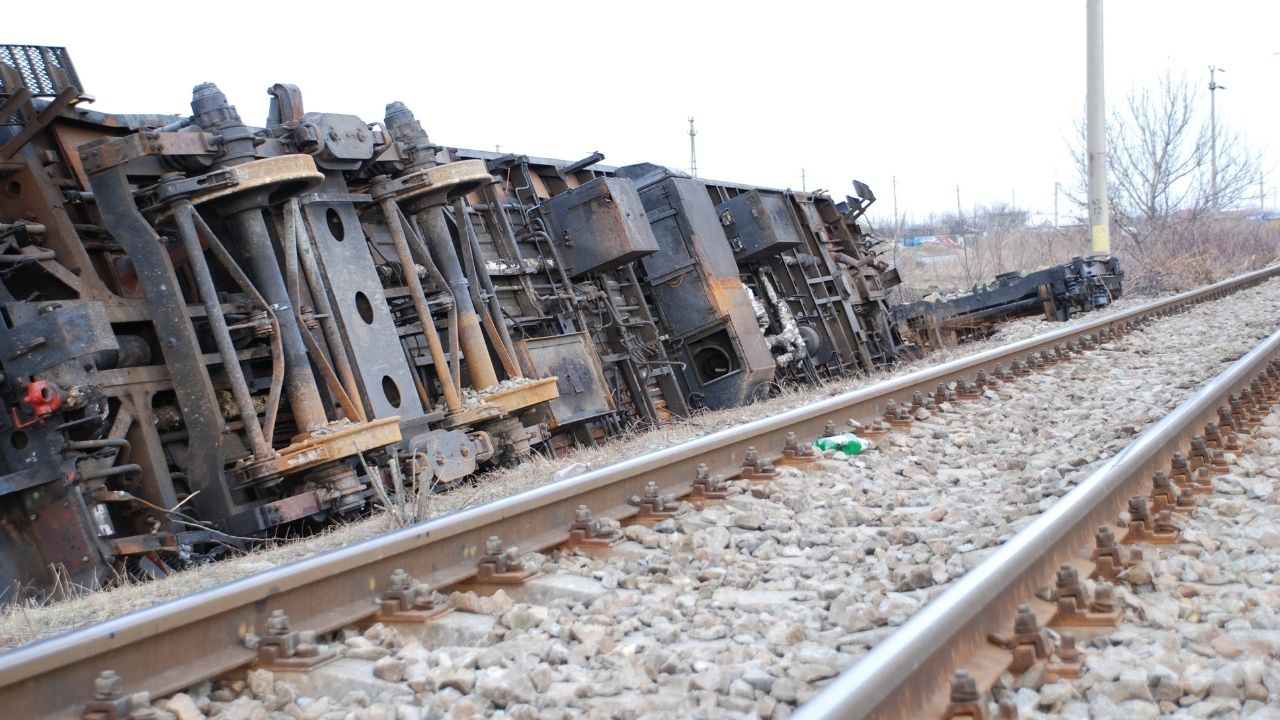Tech
How Is Technology Avoiding Train Accidents?

Train crashes and train derailments happen worldwide every year; many remember the devastating 2013 Lac-Megantic derailment and fire in Canada that killed 42 people.
However, there is new technology being installed by train companies and railroads to reduce the chance of train accidents, which are highlighted below. Of course, accidents still happen, and it’s important to talk to an experienced train accident attorney if it’s happened to you.
Enhanced Train Braking
The United States now requires better braking on trains that carry flammable materials, such as oil and petroleum. Any train with a block of 20 train cars or more that has a combustible liquid must be fitted with a two-way end-of-train (EOT) electronic device or a distributed power braking system.
Both devices spread braking functionality across several points on the train for faster, more reliable stopping power.
Additionally, any train with 70 or more tanker cars with flammable contents at speeds above 40 MPH must have an electronically controlled pneumatic braking apparatus by May 2023.
These advanced technologies allow for better-controlled braking by allowing for more uniform and responsive braking pressure application. The bottom line is a shorter stopping distance, lower derailment risks, and lower chances of train car pileup if a derailment does happen.
Safer Tanker Cars
The tank cars involved in the Lac-Megantic tragedy were an older Class III variety, which was known to be likely to rupture even in a low-speed accident.
After that derailment, the US and Canada came up with a stricter tanker car standard called Class 117. The new car has better resistance to punctures, enhanced structural strength, and is resistant to fractures if a derailment happens.
However, it’s notable that Class III tankers are still allowed to be used in the US and Canada for some dangerous chemicals until June 2025.
Better Information Sharing
Technological advancements are allowing better information sharing between train operators and government agencies, which allows for more effective decision-making. For instance, Canada’s protective Direction No. 36 requires railroad companies to provide cities and counties with dangerous goods updates, including the number of trains, cars carrying hazardous materials, and more.
This information is designed to provide local governments with what they need to know for effective emergency responses and planning.
The US is mandating better classification of many petroleum-based products to ensure better record-keeping and packaging by requiring a documented testing and sampling procedure. This information is needed to be given to the US Department of Transportation when requested.
Human Error
While technological improvements reduce the chances of train accidents, human error can still occur.
For example, in the Lac-Megantic tragedy, the train carried millions of liters of crude oil through the small town in Quebec at a dangerous 65 MPH before veering off the tracks, killing 47 people.
A few hours before the wreck, the train idled in Nantes, Quebec, and the engine caught fire and was disabled by the local fire department.
There was no power from the engine, so air leaked from the braking system. Not enough handbrakes were applied, and the train rolled downhill out of control toward the small town of Lac-Megantic.
Some of the reasons for that crash were less about technology and more about humans failing to use technology. Some human failures in that derailment were failure to maintain the train engine, not understanding the connection between the engine and air brakes, and not setting and testing handbrakes properly.
Better training of train operators has been the norm in Canada and the US since that fateful day in 2013, but there is still more work to prevent future train accidents.
Tech
AI in Placemaking: How ERA-co is Using Smarter Data to Build Better Cities

ERA-co is exploring new ways to apply AI in urban design, utilizing data-driven tools to support more thoughtful and responsive placemaking. Rather than replacing human insight, the firm sees artificial intelligence as a partner — one that can enhance how designers understand and shape the spaces where people live, move, and connect.
This approach isn’t about flashy tech or fully automated cities. It’s about asking better questions, revealing patterns we might otherwise miss, and using that knowledge to make decisions rooted in real-world behavior. For ERA-co, AI becomes most valuable when it helps clarify how a city works, layer by layer, so design teams can create places that are not only efficient but also livable and meaningful.
Understanding complexity before optimization
Before talking about smart tools or predictions, ERA-co begins with a foundational question: “What kind of problem is a city?” Nicolas Palominos, Head of Urban Design and Strategy R&D at ERA-co, references the work of Jane Jacobs to frame this.
“As Jacobs reminds us, cities exhibit complex system behavior, where multiple elements vary simultaneously, in subtle interconnected ways,” Palominos explains. “AI can augment our understanding of these parameters to design better places with optimized social benefit.”
According to Palominos, that kind of social benefit can take many forms. It might involve modeling a housing system that supports proximity-based living, such as the concept of the “15-minute city,” or applying predictive analytics to anticipate and respond to events like floods, heatwaves, or infrastructure failures.
ERA-co doesn’t use AI to chase efficiency for its own sake. Instead, the firm uses it to gain a more comprehensive understanding and a clearer picture of a place’s behavior.
Data that matches people, not just places
Not all data is created equal. When it comes to placemaking, ERA-co prioritizes what Palominos calls “spatial and temporal granularity,” which entails not only examining how a space functions on a map but also understanding how people interact with it over time — from hour to hour, and season to season.
“The most valuable data are those with the greatest spatial and temporal granularity for observing people and urban environments,” Palominos says. “Video footage, mobile data, street view imagery, and satellite imagery enable a deeper understanding of how different groups of people perceive and use public space.”
One recent ERA-co proof-of-concept used AI to assess how people visually perceive streetscapes, analyzing elements like enclosure, complexity, and human scale. These insights informed more nuanced design strategies that align with local behaviors, not just abstract zoning plans.
This level of detail matters because even small design shifts can have ripple effects on how people move, feel, and gather. With AI, ERA-co isn’t just tracking patterns but learning from them.
ERA-co’s AI mobility work: Subtle shifts, broader benefits
Some of the clearest applications of AI can be seen in mobility — how people and goods move through cities. It’s here that ERA-co sees measurable gains in both function and experience.
“AI-driven fleet optimization balances supply and demand in bus services and bike-share systems,” Palominos says. “On the consumer side, it streamlines courier and delivery services through route optimization.”
These systems don’t operate in isolation. When they’re better coordinated, they can relieve pressure on road networks, reduce congestion, and lower energy use. But what makes ERA-co’s approach different is that it doesn’t stop at logistics. It examines how those systems impact the daily lives of people who live in and move through a place.
The limits of AI and the role of design judgment
As much as AI can help us see more, ERA-co is careful not to let it make the final call. Cities are more than just systems — they’re layered with memory, identity, and human connection. And not everything meaningful can be measured.
“There have been cases where AI insights pointed us in one direction, but human judgment and cultural understanding led us another way,” Palominos notes.
Sometimes a place functions well on paper, but feels hollow in practice. Other times, a community gathering space might disrupt traffic flow, yet provide invaluable support for social well-being.
This is where design intuition becomes critical. ERA-co uses AI to inform, not dictate, the design process.
Planning for a future in flux
Looking ahead, ERA-co sees AI playing a growing role in helping cities adapt — not just to top physical threats like climate change, but also to slower, less visible shifts in how people live and connect.
“AI will amplify our understanding of how cities function through enhanced spatial representation and analysis, informing better human decision-making,” Palominos says. He references recent findings (like an MIT study showing people walk faster and linger less in public spaces) as examples of trends that would have been hard to anticipate without AI.
Still, the goal isn’t to automate responses to those behaviors. It’s using those insights to reimagine what kinds of public spaces people may need in the future, especially as patterns of connection and isolation shift.
-

 Tech5 years ago
Tech5 years agoEffuel Reviews (2021) – Effuel ECO OBD2 Saves Fuel, and Reduce Gas Cost? Effuel Customer Reviews
-

 Tech6 years ago
Tech6 years agoBosch Power Tools India Launches ‘Cordless Matlab Bosch’ Campaign to Demonstrate the Power of Cordless
-

 Lifestyle6 years ago
Lifestyle6 years agoCatholic Cases App brings Church’s Moral Teachings to Androids and iPhones
-

 Lifestyle5 years ago
Lifestyle5 years agoEast Side Hype x Billionaire Boys Club. Hottest New Streetwear Releases in Utah.
-

 Tech7 years ago
Tech7 years agoCloud Buyers & Investors to Profit in the Future
-

 Lifestyle5 years ago
Lifestyle5 years agoThe Midas of Cosmetic Dermatology: Dr. Simon Ourian
-

 Health7 years ago
Health7 years agoCBDistillery Review: Is it a scam?
-

 Entertainment6 years ago
Entertainment6 years agoAvengers Endgame now Available on 123Movies for Download & Streaming for Free
